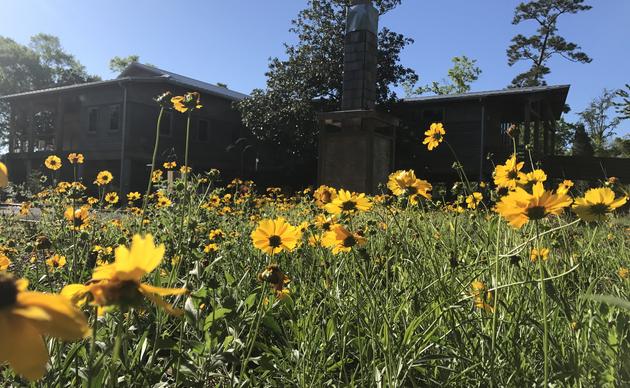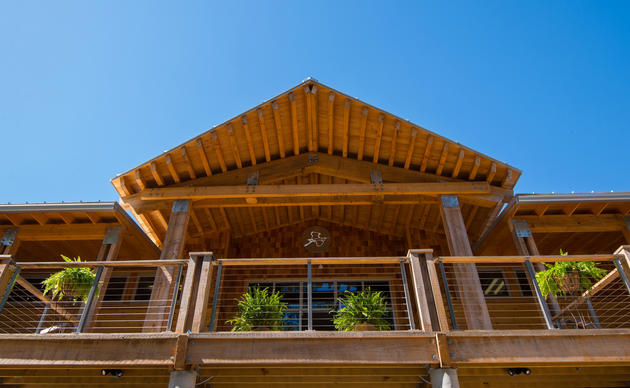Project NestWatch and Nesting Season
The warmer temperatures and longer daylight hours of spring usher in the arrival of bird migration and of nesting season.
Eastern Bluebirds, a familiar Mississippi resident, have an official nesting season that begins on March 1st of each year. At the Pascagoula River Audubon Center in Moss Point, our bluebirds didn’t get that memo: the male brought nest material to our box in early February and by February 27th, the female had completed nest construction and laid five beautiful blue eggs. The eggs were incubated for 15 days before the first two chicks hatched. Both adults bring insects back to the nest box to feed their growing young.
Several factors allow for an early nesting season along the Gulf Coast: warm temperatures, leaf-out of trees and plants, and availability of the insects upon which most song birds feed their young. Because this occurs in February, our resident birds can begin nesting before the spring migration even begins. Early nesters like our Eastern Bluebird may hatch four or even five nests of young before the breeding season ends in late summer. Even migratory birds that don’t arrive in Mississippi until mid-April, such as the Prothonotary Warbler, can successfully fledge three or four clutches in a season.
Many of our larger raptors, from Bald Eagles to Osprey to Great Horned Owls are already fledging young by this time of year, and monitoring their nesting activities can help get us get through the darker winter months when other birding may be slower.
Project NestWatch: The Perfect Citizen Science Project for Spring
Monitoring the nesting birds in your backyard, school grounds, or public park can be a rewarding and meaningful experience for Citizen Scientists of all ages. Project NestWatch, an online database of nest monitoring data, is an excellent way to share your nest observations and simultaneously provides scientists with data about local songbird populations. It is also a great way to deepen your own understanding of bird life cycles and increase your awareness of the seasonal events taking place in the natural world.
Citizen Science projects benefit everyone- the participants can contribute real-world data to larger data sets and scientists can utilize a much broader pool of data than they might be able to obstain on their own. Projects like NestWatch show us trends across seasons, states, and bird species and because the online site is user-friendly, anyone can add data, search for information, and get a real-time picture of bird nesting information at any point in the season.
What are the benefits are making and submitting nest data?
Songbird populations throughout North America are in decline for a variety of reasons from habitat loss to predation. Our observations of nesting birds- whether a particular nest or pair are successful or not- contributes to the scientific understanding of bird population trends. Even when a nest fails, that data point is important. Understanding when, where, and why birds are succesful can help scientists better understand how to conserve populations.
Paying attention to your backyard birds is also simply enjoyable- many of us recognize the frequent visitors to our feeders, nestboxes, and landscapes and adding a few minutes of nest monitoring can add greatly to our appreciation of our avian neighbors.




